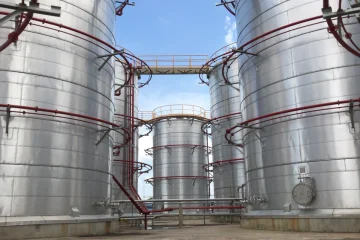Commodities in Hong Kong: Tactical Trading Strategies for Precious Metals

Hong Kong is a significant player in the global commodities market, particularly in precious metals trading. The city’s strategic location, robust financial infrastructure, and regulatory framework make it a crucial hub for traders. This article aims to provide tactical trading strategies for precious metals, helping traders navigate the unique aspects of the Hong Kong market.
Understanding Precious Metals as Commodities
Precious metals like gold, silver, platinum, and palladium have been valuable for centuries, serving as both investment assets and industrial commodities. Gold, known for its historical significance and role as a hedge against inflation, is the most traded precious metal. Silver, while also used in jewellery and as a store of value, has substantial industrial applications. Platinum and palladium are primarily used in the automotive industry for catalytic converters, making them sensitive to changes in industrial demand.
Market Dynamics and Factors Influencing Prices
The prices of precious metals are influenced by various factors. Economic indicators such as inflation rates, interest rates, and economic growth can drive demand for these metals. Geopolitical events, including conflicts and trade tensions, can lead to increased demand as investors seek safe-haven assets. Supply and demand fundamentals, such as mining production levels and industrial demand, also play a crucial role. Additionally, currency fluctuations, especially the strength of the US dollar, can impact prices since precious metals are typically priced in dollars.
Hong Kong’s Commodities Trading Environment
Hong Kong’s regulatory environment is designed to ensure market integrity and protect investors. Key regulatory bodies like the Securities and Futures Commission (SFC) oversee the commodities market. Compliance with these regulations is crucial for traders to avoid legal issues and ensure transparent operations.
Trading Platforms and Exchanges
Hong Kong is home to several significant trading platforms and exchanges, with the Hong Kong Mercantile Exchange (HKMEx) being a prominent one. These platforms provide the infrastructure for trading precious metals, offering tools and resources that facilitate efficient trading. Traders can access real-time market data, execute trades, and manage their portfolios through these exchanges.
Market Participants
The Hong Kong precious metals market comprises various participants, including institutional investors, hedge funds, retail traders, and physical buyers like jewellers and manufacturers. Understanding the roles and strategies of these players can provide insights into market movements and trends.
Tactical Trading Strategies for Precious Metals
Technical analysis involves using charts and indicators to identify trading opportunities. Key tools include moving averages, which help identify trend directions, and the Relative Strength Index (RSI) and Moving Average Convergence Divergence (MACD), which signal potential entry and exit points. By analyzing historical price data and patterns, traders can make informed decisions based on observed trends.
Fundamental Analysis
Fundamental analysis focuses on evaluating macroeconomic data and news that can affect precious metal prices. Traders should monitor economic indicators such as GDP growth, unemployment rates, and inflation data. Additionally, geopolitical events and policy changes can have significant impacts. Assessing supply chain reports and production levels also provides insights into the availability and future supply of precious metals.
Seasonal Trends and Cyclical Patterns
Historical data shows that precious metals often exhibit seasonal trends and cyclical patterns. For instance, gold prices tend to rise during times of economic uncertainty or geopolitical tensions. By studying these patterns, traders can develop strategies to capitalize on expected price movements during specific periods.
Risk Management Techniques
Effective risk management is crucial in commodities trading. Diversification involves spreading investments across different assets to reduce exposure to any single market. Hedging, using instruments like futures contracts, helps mitigate potential losses. Setting stop-loss orders ensures that trades are automatically closed at predetermined loss levels, preventing significant losses. Position sizing, or determining the amount to invest in each trade, also helps manage risk.
Advanced Trading Techniques
Derivatives like futures and options offer advanced trading strategies. Futures contracts allow traders to buy or sell precious metals at a predetermined price on a future date, providing opportunities for profit from price changes. Options trading enables traders to speculate on price movements with limited risk, as they have the option, but not the obligation, to execute the trade.
Arbitrage Opportunities
Arbitrage involves exploiting price discrepancies between different markets or instruments. Traders can take advantage of these opportunities by simultaneously buying and selling precious metals in different markets to profit from the price differences. Cross-market arbitrage, for instance, involves identifying and exploiting price gaps between the Hong Kong market and other global markets.
High-Frequency Trading (HFT)
High-frequency trading uses sophisticated algorithms and technology to execute trades at extremely high speeds. HFT can take advantage of small price movements and inefficiencies in the market. While it offers the potential for significant profits, it also requires substantial investment in technology and infrastructure. Additionally, HFT strategies must be carefully designed to comply with regulatory requirements and avoid market disruptions.
Tools and Resources for Traders
Reliable trading software and platforms are essential for successful trading. These tools provide real-time market data, advanced charting capabilities, and automated trading features. One such popular platform is from investment bank Saxo Hong Kong. These platforms enable traders to execute trades efficiently, monitor market trends, and analyze historical data.
Continuous learning is vital for traders to stay updated on market trends and refine their strategies. Books, online courses, and seminars offer valuable insights into precious metals trading. Additionally, online forums and communities provide platforms for traders to share experiences, discuss strategies, and gain new perspectives.
Conclusion
Trading precious metals in Hong Kong requires a well-rounded approach that combines technical and fundamental analysis, advanced trading techniques, and effective risk management. By understanding the unique aspects of the Hong Kong market and leveraging available tools and resources, traders can develop more well-rounded strategies for trading precious metals. Continuous learning and adaptation are essential for navigating the dynamic and ever-evolving commodities market.









